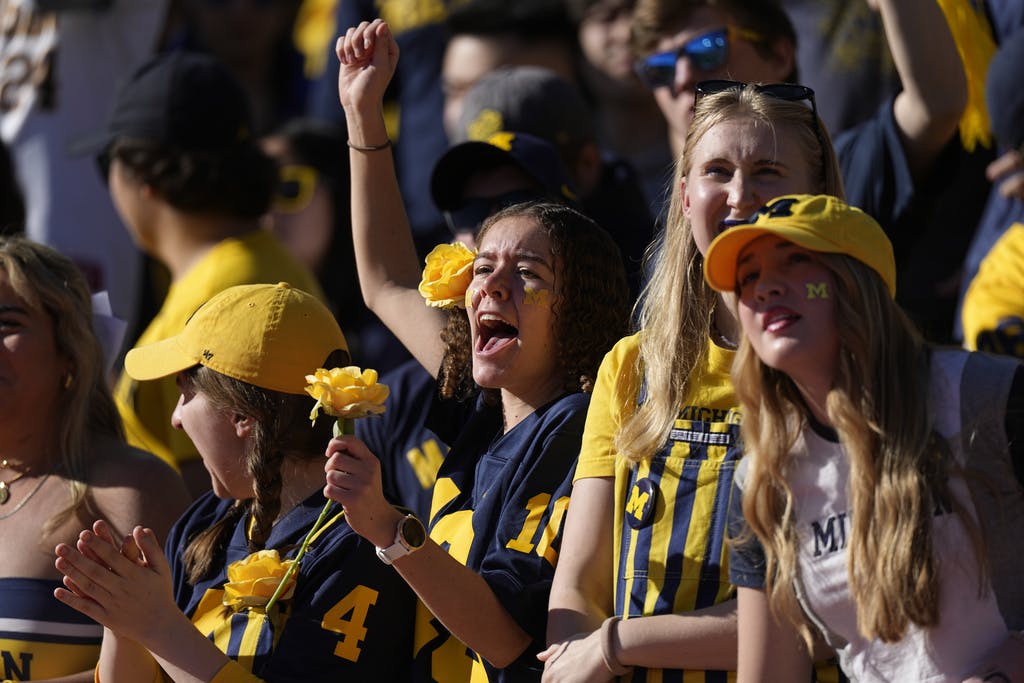Is the College Football Transfer Portal Ruining High School Recruiting?
Head coaches are increasingly turning to defectors from other schools rather than untested players.

The latest college football recruiting cycle ended this week with National Signing Day, when proud parents and excited high school recruits announced where they intend to play.
Yet, National Signing Day is no longer what it once was. The emergence of the NCAA Transfer Portal has sharply reduced the opportunities for hundreds of high school athletes to gain scholarships to Division I programs, the highest level of competition. The portal, which allows college players to freely transfer between colleges, is the primary source for recruiting for most athletic programs, according to several people interviewed by the Sun.
“The reality is college coaches aren’t looking for high school players anymore,” the owner of a recruiting consulting service called AlphaRecruits based at Lehi, Utah, Will Snowden, told the Sun. He relates that he is “seeing about a 65 percent drop in high school recruiting. The same kids I have this year, I would be putting them in some real places three or four years ago. Now, it’s not going to happen.”
The portal’s impact on college athletic programs, particularly football and basketball, has been huge. Players are leaving programs to switch others for a myriad of reasons that can include more playing time or more money from Name, Image, and Likeness, a program allowing student-athletes to capitalize financially on their celebrity. College coaches under pressure to win are now looking to the portal for players with college experience, who could make an immediate impact.
“At the end of the day, would you rather have a kid that’s been in college, being fed for two years, coached for two years, and lifting for two years, or a high school kid?” Mr. Snowden said. “You already know that the college kid can handle being away from his parents. You already know his grades. You know everything about how he handles life at a college level.”
College coaches are reluctant to spend time and resources developing a high school player who might not have an impact until his or her junior or senior season. It could be career suicide in an era of impatient administrators and fan bases, especially at schools that lose their best players to Power Five programs.
“The portal 100 percent is taking away opportunities for high school seniors,” the head women’s basketball coach at the University of California, Charim Smith, told the Sun. “I can get someone who is experienced and who has played at a college level and not have to wait for you to develop for two years. I’m tasked with winning games, so that’s what I have to do. I can’t wait.”
Recruiting was once about shoe leather — visiting high schools, meeting with coaches and players, and going eyeball-to-eyeball with parents. Now much of the recruiting is done by watching posted films of prospects already in college and the portal. The top 300 four- and five-star high school prospects might get a chance at a Power Five school, but as Mr. Snowden points out, “There are thousands of three-star and two-star players that won’t get that opportunity.”
A recruiting consultant based at Commerce, Georgia, Lamar Daniels, tells the Sun that a coach at a Football Bowl Subdivision program had just one high school running back among his prospects. The majority were from Division II schools. “A kid coming out of high school that might have been an FBS or FCS [Football Championship Subdivision] prospect might have to go to Division II or [junior college] route because they’re not giving out scholarships to these high school kids,” he said.
New Mexico State University, say, a member of Conference USA, signed 18 transfers and four true freshmen. At Colorado, the Buffaloes added five high school recruits and 16 transfers during the early-signing period. Florida International University, an FBS school, signed 13 high school prospects and 13 transfers.
The head women’s basketball coach at the University of San Diego, Heidi VanDerveer, tells the Sun that the portal has changed how coaches build a roster. “If you look at a typical roster, 10 percent may be high school kids,” she said. “You’re concentrating on winning this year instead of investing in a kid because either you’re going to get rid of them or they’re going to leave.”
Mr. Snowden says that FCS, Group 5, and Division II programs are now “feeders” to Power Five schools, reducing the importance of building through high school recruits. “With high school kids there’s just too many questions,” he adds.
What can be done? Not much. “Kids need to focus on themselves and not worry about the next prospect’s journey,” Mr. Daniels said. “Find someone who is going to put you on the right path and tell you what camps to attend and what trainers to train with. Then just play ball, and put some good film out. Be a high-character kid, and get it done in the classroom and you’ll get what you deserve.”

